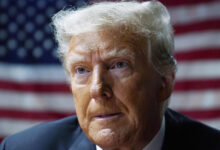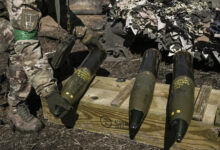
Authorizing the move in case of an attempt to bypass sanctions will be adopted in October, the EU Commissioner has said

© Andia / Universal Images Group via Getty Images
The European Union will adopt a directive as early as October that allows Russian assets on the bloc’s territory to be seized if attempts are made to bypass sanctions. EU authorities have agreed to support it, EU Justice Commissioner Didier Reynders said on Tuesday.
Speaking to reporters prior to the informal meeting of Justice and Home Affairs Ministers, Reynders revealed that the European Parliament has already greenlit the measure, and there was “a consensus in the [European] Council” regarding the matter.
“After the summer break, we will have an approval in the Council,” he said, adding that he would come up with a directive in October.
“So we are going very fast,” Reynders pointed out. “We will have an extension of the list of eurocrimes with such a criminal offense, if it’s possible to detect an attempt to circumvent or to bypass the sanctions.”
The EU justice commissioner also commented on the possible fate of the seized assets, saying that the money may go back to a common fund for the Ukrainian people after the assets are confiscated.
According to Reynders’ earlier remarks, the European Union has frozen Russian assets worth $13.8 billion since Moscow began its military offensive against Ukraine. He also added that a very large part of the sum comes from just five member states, albeit refusing to name them.


Read more
Amidst the Ukraine conflict, Western countries, including the EU, slapped a raft of sweeping sanctions on Moscow, including the freezing of assets and a ban on Russian oil delivered by sea. The measures largely target Russia’s economy, supposedly aiming to reduce the country’s ability to fund its military.
Russia sent troops into Ukraine on February 24, citing Kiev’s failure to implement the Minsk agreements, designed to give the regions of Donetsk and Lugansk special status within the Ukrainian state. The protocols, brokered by Germany and France, were first signed in 2014. Former Ukrainian president Petro Poroshenko has since admitted that Kiev’s main goal was to use the ceasefire to buy time and “create powerful armed forces.”
In February 2022, the Kremlin recognized the Donbass republics as independent states and demanded that Ukraine officially declare itself a neutral country that will never join any Western military bloc. Kiev insists the Russian offensive was completely unprovoked.




